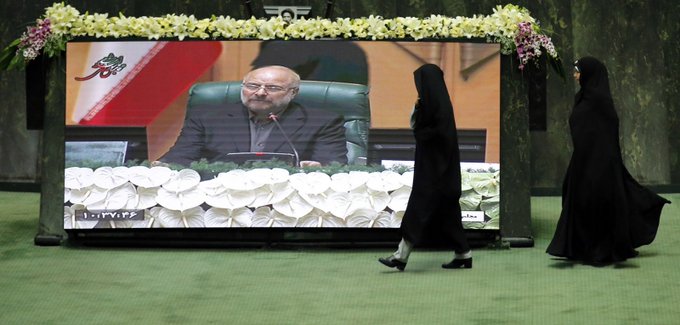THE MYSOGONY OF THE MULLAHS

THE MYSOGONY OF THE MULLAHS
There were expressions of outrage and disgust internationally in August when a court in Iran sentenced a man to only 9 years jail for beheading his 14-year-old daughter in an honour killing. Romina Ashrafi had fallen in love with a man twice her age. Her father reported the affair to the police who arrested the girl and made her appear before a judge. She pled with the judge not to send her home as she feared her father would harm her. Her pleas were ignored. In May, Romina’s father beheaded her with a scythe.
In the theocratic fascist dictatorship, the Iranian penal code is designed to enable men to discipline women and girls if they fail to conform to strict Islamic codes. Fathers are regarded as the guardians of their daughters and in this case, even although Romina’s father was a severe drug addict and beat her mercilessly every day, when he argued that she had dishonoured his family, he was given only the most lenient sentence for her brutal murder. His sentence was in sharp contrast to the heavy jail terms handed down to women who fail to cover their hair or wear the hijab. In certain Iranian provinces 20% of all murders are classified as ‘honour killings’.
There are approximately 40 million women in the Islamic Republic of Iran, over half under the age of thirty. Women make up more than 50% of university students, but, because of discrimination and blatant sexism creating obstacles to employment, they account for only 19% of Iran’s workforce. At a time when women in the West have achieved political, economic, personal and social equality, Iranian women are amongst the most repressed in the world, ruled by a regime dominated by elderly, bearded misogynists. But young Iranian women are becoming increasingly engaged in the growing opposition to the mullahs’ corrupt regime. In the nationwide uprising last November, tens of thousands of courageous female teachers, medical staff, students, factory workers and pensioners took to the streets to demand an end to corruption, an end to discrimination and repression and an end to the clerical regime’s aggressive military adventurism across the Middle East. Hundreds were killed and thousands were arrested by the Islamic Revolutionary Guards Corps (IRGC), the regime’s Gestapo.
Now, resistance units of the People’s Mojahedin of Iran (PMOI/MEK), who are active in every town and city in Iran, are receiving daily reports of brutality against women in jail. In August there were reports of female prisoners in Sepidar Prison, Ahvaz, being tortured and bullied by prison guards. Even pregnant women were tortured under interrogation. In the notorious Evin prison in Tehran, the leading human rights lawyer and political prisoner Nasrin Sotoudeh, is on hunger strike and in a critical condition, protesting about the appalling sanitary conditions during the pandemic, which has raged unchecked through Iran’s prisons.
The theocratic dictatorship in Iran has a history of targeting women with oppressive laws that would not be tolerated in the West or indeed in most civilized countries in the world. In Iran women are considered the property of their closest male relative and have no legal rights. Girls of nine can be married off by their parents. A woman’s evidence in court is worth only half that of a man. Women may not seek to have a man charged with rape unless they have four independent witnesses. All family relationships are strictly controlled by Shariah law. Homosexual behaviour, adultery, sex outside marriage, are all prohibited. Women accused of such behaviour can incur severe punishments, including beatings and death, sometimes by stoning.
Women’s dress codes are also under constant scrutiny. They must wear the hijab and ‘morality police’ are on relentless patrol to enforce the law. Women, particularly young women, are singled out for brutal attacks for the ‘crime’ of mal-veiling. Girls who were deemed to be improperly dressed in the street have suffered horrific acid attacks and stabbings, in assaults openly condoned by the mullahs. Teenage girls, arrested for the offence of posting videos of themselves dancing or singing on social media, have been publicly flogged. Young female students attending end-of-term parties have been fined and beaten.This is what gender equality looks like in Iran today.
Ayatollah Ruhollah Khomenei, the first Supreme Leader of Iran after the 1979 revolution and the father of Islamic fundamentalism, stated that equality between women and men was “in fundamental violation of some of the most crucial rulings of Islam and in defiance of some of the explicit commandments of the Koran”. Immediately following the revolution, Khomenei abolished the ‘Family Protection Law’ that gave women family rights. He also cancelled social services for women and abolished the role of female judges in Iran’s justice system. Today, only 6% of MPs in Iran are women.
During the seven-year reign of the allegedly ‘reformist’ and ‘moderate’ president Hassan Rouhani, 107 women have been executed. In 1988, based on a ‘fatwa’ by the psychopathic Khomenei, the mullahs massacred over 30,000 political prisoners, most of whom were supporters of the PMOI/MEK. Thousands of those hanged from cranes, day after day, were grandmothers, mothers, pregnant women and even teenagers. Senior members of Rouhani’s government have boasted of their role in this appalling crime against humanity, which has been the subject of reports by Amnesty international and is actively being investigated by the UN. Shockingly, Alireza Avaei, one of the key executioners during the 1988 genocide, is now Rouhani’s Minister of Justice.
Today, Iranian women are at the forefront of the resistance to the theocratic dictatorship. Indeed, the main democratic opposition movement, the PMOI/MEK is led by a woman, the charismatic Maryam Rajavi. Brave women are now routinely joining their brothers to demand regime change and an end to the misogyny and repression which has terrorized not only the Iranian people for the past four decades, but a vast part of the Middle East as well.
